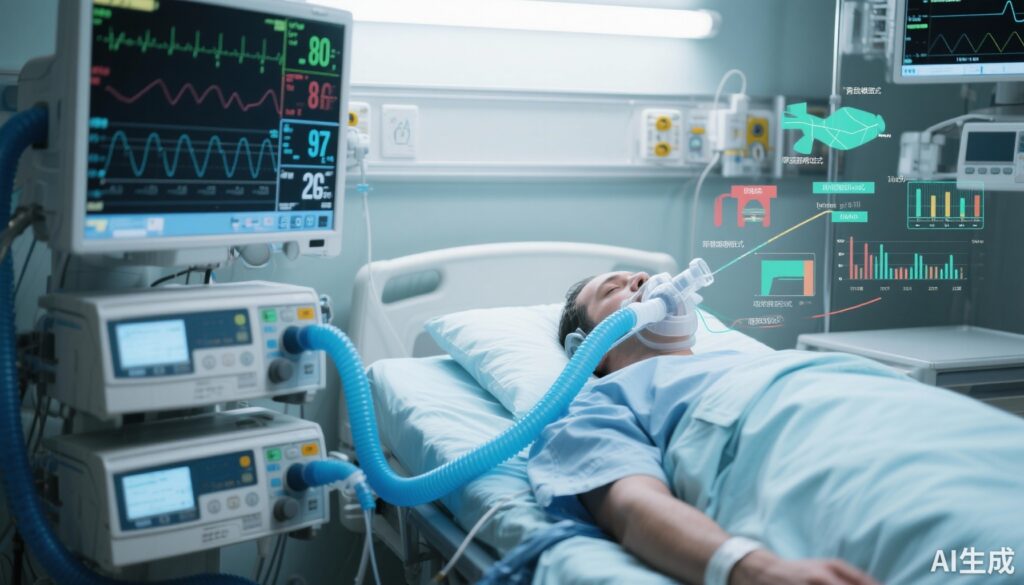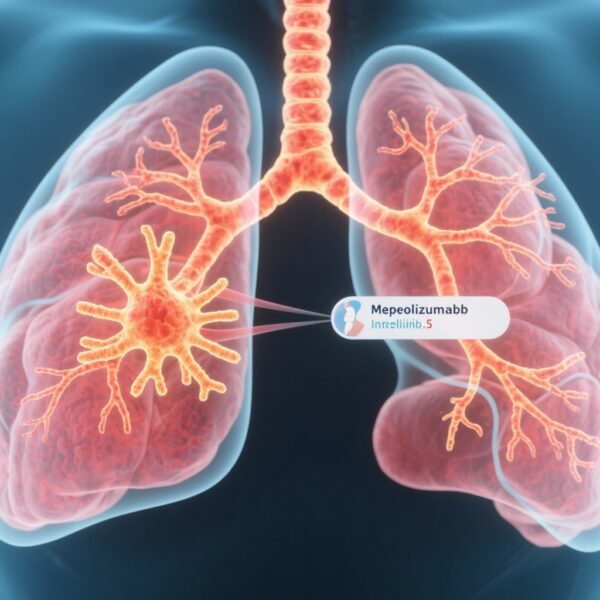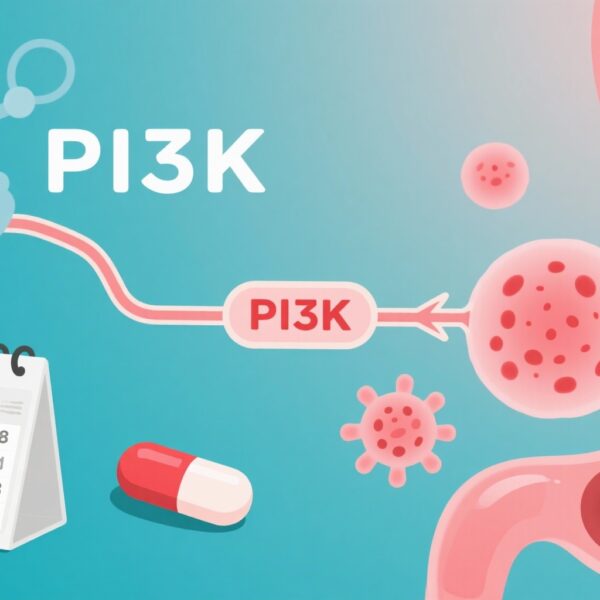Highlight
- An international randomized trial compared proportional-assist ventilation (PAV+) to pressure-support ventilation (PSV) for patients requiring partial ventilatory support.
- The study found no significant difference in median time to successful liberation from mechanical ventilation between PAV+ and PSV groups.
- Secondary outcomes, including ventilator-free days, mortality at 90 days, reintubation, tracheostomy rates, and adverse events, were similar in both groups.
- A reduction in sedative dosing was noted with PAV+ compared to PSV, but the clinical relevance of this requires further study.
Study Background and Disease Burden
Mechanical ventilation remains a cornerstone supportive therapy in intensive care units (ICUs) for patients with respiratory failure or compromised airway protection. However, prolonged dependence on mechanical ventilation increases risks of ventilator-associated pneumonia, diaphragm dysfunction, delirium related to sedation, and longer ICU and hospital stays. The process of liberating patients from mechanical ventilation promptly and safely is crucial to reduce morbidity and mortality and improve long-term outcomes.
Conventional partial ventilatory support is widely delivered via pressure-support ventilation (PSV), aiming to normalize patient respiratory rate and tidal volume, but patient-ventilator asynchrony and excessive workload of breathing remain concerns. Proportional-assist ventilation with load-adjustable gain factors (PAV+) is a newer modality designed to assist ventilation in proportion to the patient’s respiratory effort, theoretically promoting better patient-ventilator synchrony, reducing work of breathing, and possibly facilitating faster weaning.
Despite physiological rationale and promising pilot studies, it remained unclear whether PAV+ would translate into clinically meaningful improvements in liberation time compared to PSV in a broad ICU population.
Study Design
The PROMIZING trial was a multicenter, international, randomized controlled trial conducted at 23 centers across seven countries. The study enrolled 722 adult patients who had been mechanically ventilated for at least 24 hours and who were stable enough to undergo partial ventilatory support with PSV but were not yet suitable for immediate liberation.
After meeting inclusion criteria and undergoing baseline assessment, 573 patients were randomized into two arms:
– PAV+ group: Ventilation was provided using proportional-assist ventilation targeting normalization of patients’ work of breathing.
– PSV group: Ventilation was provided using pressure-support ventilation with titration to achieve normal respiratory rate and tidal volume.
The trial’s primary endpoint was time from randomization to successful liberation from mechanical ventilation, defined by a sustained period without the need for ventilatory support.
Secondary endpoints included ventilator-free days within 28 days, incidence of reintubation, need for tracheostomy, mortality at 90 days, sedative exposure changes, and adverse events.
Key Findings
Among the 573 patients included in the analysis, the study found:
– Median time to successful liberation was 7.3 days (95% CI, 6.2 to 9.7) in the PAV+ group versus 6.8 days (95% CI, 5.4 to 8.8) in the PSV group (P = 0.58), indicating no statistically significant difference.
– Ventilator-free days were similar between groups.
– The incidence of reintubation and tracheostomy did not differ significantly.
– Mortality by day 90 was 29.6% in the PAV+ group and 26.6% in the PSV group, a difference not statistically significant.
– From a sedation standpoint, the PAV+ group had a mean reduction in midazolam-equivalent dose (-1.51±3.28 mg/kg body weight) at day 28 compared to baseline, whereas the PSV group had no significant change (0.04±0.97 mg/kg). This suggests PAV+ might be associated with reduced sedative need, but clinical impact was not further clarified.
– Serious adverse events were comparable, occurring in 10.8% in the PAV+ group and 9.8% in the PSV group (P = 0.79).
Collectively, these results suggest that, in this diverse mechanically ventilated critical care population, PAV+ does not facilitate faster liberation from mechanical ventilation compared to PSV.
Expert Commentary
The PROMIZING trial is one of the largest assessments directly comparing PAV+ to PSV for weaning in a heterogeneous ICU population. While the physiological benefits of PAV+—such as improved patient-ventilator synchrony and workload matching—are compelling, this trial indicates these do not automatically translate into shorter ventilation durations at a population level.
The observed difference in sedative use is intriguing and consistent with the hypothesis that better synchrony reduces patient discomfort and anxiety, potentially decreasing sedative requirements. However, the absolute differences in sedation were modest, and their relationship to clinical outcomes like delirium or cognitive recovery warrants further investigation.
Limitations include the trial’s focus on patients already deemed stable enough to tolerate partial support with PSV, potentially diluting measurable benefit. Additionally, practice heterogeneity across different ICUs and countries might have influenced outcomes.
The findings align with current guidelines that recommend individualized ventilatory strategies and do not prioritize one partial support mode over another solely for weaning duration.
Emerging evidence suggests that novel modes of ventilation may offer advantages in specific subgroups, such as patients with difficult-to-wean respiratory mechanics or neuromuscular disorders, highlighting the need for personalized ventilator management.
Conclusion
This landmark international clinical trial demonstrates that proportional-assist ventilation with load-adjustable gain factors does not significantly reduce time to liberation from mechanical ventilation compared with standard pressure-support ventilation among critically ill adults. Secondary outcomes, including mortality and adverse events, were similar, suggesting comparable safety profiles.
Clinicians should continue to tailor ventilatory support based on individual patient needs, monitoring for patient-ventilator synchrony and comfort, but this trial does not support routine preferential use of PAV+ over PSV to shorten mechanical ventilation duration.
Future research should explore whether specific patient subpopulations or combined interventions (e.g., sedation protocols) might derive greater benefit from proportional-assist ventilation technologies. Furthermore, integrating physiological monitoring with clinical outcomes may clarify the mechanistic impact of assisted ventilation modes.
References
Bosma KJ, Burns KEA, Martin CM, et al; PROMIZING Study Investigators, the Canadian Critical Care Trials Group, and the REVA Network. Proportional-Assist Ventilation for Minimizing the Duration of Mechanical Ventilation. N Engl J Med. 2025 Sep 18;393(11):1088-1103. doi: 10.1056/NEJMoa2505708.
Additional literature supporting ventilation strategies and weaning protocols can be found in
– Girard TD, Alhazzani W, Kress JP. The Intensive Care Unit Liberation Bundle. Am J Respir Crit Care Med. 2016;194(10):1199-1210.
– MacIntyre NR, et al. Evidence-Based Guidelines for Weaning and Discontinuing Ventilatory Support. Chest. 2001;120(6 Suppl):375S-395S.



